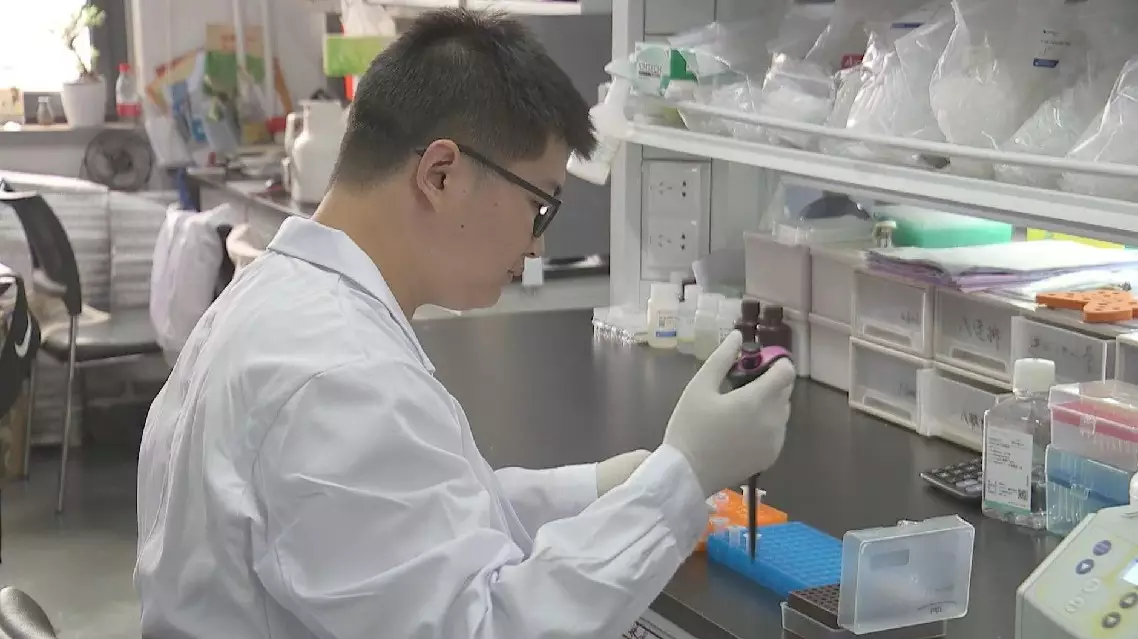Enhanced Precision In Gene Editing: Inserting Complete Genes

Table of Contents
Overcoming the Challenges of Complete Gene Insertion
Limitations of Traditional Gene Editing Methods
Traditional gene editing methods, primarily relying on CRISPR-Cas systems, face significant limitations when it comes to inserting large genes or entire gene cassettes. While CRISPR-Cas9 offers remarkable gene targeting capabilities, its efficiency in precise gene insertion is often hampered by several factors:
- Difficulty in precise targeting: Off-target effects, where the CRISPR-Cas system edits unintended locations in the genome, remain a significant concern, especially with larger DNA inserts. The larger the insertion, the higher the probability of errors.
- Potential for off-target effects: Even with improved guide RNA design, off-target cuts can lead to unintended mutations and potentially harmful consequences.
- Limitations on the size of DNA fragments that can be inserted: CRISPR-Cas9-mediated homologous recombination (HDR), the primary mechanism for precise gene insertion, struggles with the efficient insertion of large DNA sequences exceeding a few kilobases. This significantly limits its application for inserting complete genes, many of which are several tens of kilobases in size. Current methods often result in incomplete insertions or deletions.
The Role of Advanced Delivery Systems
Efficient delivery of the complete gene is crucial for successful gene insertion. This relies heavily on advanced delivery systems, which can be broadly categorized into viral and non-viral methods:
- Viral vectors: Adeno-associated viruses (AAVs) and lentiviruses are widely used for gene delivery due to their ability to transduce a variety of cell types. However, AAVs have limited payload capacity, restricting the size of genes they can carry. Lentiviruses offer larger payload capacity but can integrate randomly into the genome, posing a risk of insertional mutagenesis.
- Non-viral methods: Non-viral methods like lipid nanoparticles (LNPs) and electroporation offer advantages in terms of reduced immunogenicity compared to viral vectors. LNPs can encapsulate larger DNA fragments but transfection efficiency varies depending on the cell type and delivery conditions. Electroporation, while capable of delivering large DNA molecules, can cause cell damage.
The choice of delivery system depends on factors like the target tissue, gene size, and potential immunogenicity. Ongoing research focuses on improving the efficiency and safety of existing methods and developing novel delivery strategies.
Novel Techniques for Precise Gene Insertion
Homology-Directed Repair (HDR) Enhancement
HDR is a natural cellular mechanism that uses a homologous DNA template to repair double-strand breaks. This process can be leveraged for precise gene insertion, but its efficiency is inherently low. Several strategies are being developed to improve HDR efficiency:
- HDR-enhancing proteins: Proteins like Cas9 nickases and specialized polymerases enhance HDR by increasing the fidelity of repair and reducing the likelihood of error-prone non-homologous end joining (NHEJ).
- Donor template design: Optimizing the design of the donor DNA template, which carries the complete gene to be inserted, can significantly improve HDR efficiency. Factors like the length of homology arms flanking the gene and the overall sequence composition play critical roles.
- Optimized CRISPR-Cas systems: Modified versions of Cas9 and other CRISPR-associated proteins, along with improved guide RNA designs, enhance targeting precision and HDR frequency.
Precise Genome Editing Platforms Beyond CRISPR-Cas
Beyond CRISPR-Cas systems, newer gene editing technologies offer promising alternatives for precise gene insertion:
- Base editors: These tools allow for single-base changes without inducing double-strand breaks, minimizing off-target effects. While not directly inserting complete genes, they can be utilized to modify existing genomic sequences to create sites more amenable to HDR-mediated insertion.
- Prime editors: These advanced editors combine the precision of base editors with the ability to insert or delete short sequences, offering greater flexibility and potentially higher efficiency for precise gene insertion compared to traditional CRISPR-Cas systems. They are still in early stages of development but hold significant promise.
Applications and Future Directions of Precise Gene Insertion
Therapeutic Applications in Gene Therapy
Precise gene insertion holds immense promise for treating various genetic disorders:
- Cystic fibrosis: Inserting a functional copy of the CFTR gene into lung cells could potentially cure this debilitating disease.
- Hemophilia: Replacing defective clotting factor genes could restore normal clotting function.
- Sickle cell anemia: Correcting the mutation in the beta-globin gene could eliminate the production of abnormal hemoglobin.
Numerous clinical trials are underway to evaluate the efficacy and safety of gene therapy approaches based on precise gene insertion. Early results have been encouraging, but challenges remain in delivering the therapeutic gene to the target tissue and ensuring long-term expression.
Advancements in Research and Development
Ongoing research is focused on further refining and improving gene insertion techniques:
- Improved delivery systems: Development of novel viral and non-viral vectors with higher efficiency and reduced immunogenicity.
- More efficient HDR pathways: Identification and engineering of cellular factors that enhance HDR efficiency.
- Development of new gene editing tools: Exploration of novel gene editing technologies that combine the precision of base editors and prime editors with the ability to insert larger DNA sequences.
Conclusion
Inserting complete genes with high precision remains a significant challenge in gene editing, but remarkable progress has been made. Overcoming limitations in traditional methods, improving HDR efficiency, and exploring novel gene editing technologies are crucial for advancing gene therapy. The future of gene therapy hinges on further advancements in inserting complete genes. Continued research and development in this field are crucial for realizing the full therapeutic potential of gene editing technologies, paving the way for effective treatments for a wide range of genetic diseases. Further exploration into improved delivery systems and novel gene editing platforms will be vital for achieving this goal.

Featured Posts
-
 The Rise Of Deutsche Banks Fic Trading Team
May 30, 2025
The Rise Of Deutsche Banks Fic Trading Team
May 30, 2025 -
 Ti Na Deite Stin Tileorasi Tin Tetarti 23 4
May 30, 2025
Ti Na Deite Stin Tileorasi Tin Tetarti 23 4
May 30, 2025 -
 Chantier A69 L Etat Relance Le Projet Apres Annulation Sud Ouest
May 30, 2025
Chantier A69 L Etat Relance Le Projet Apres Annulation Sud Ouest
May 30, 2025 -
 How Novo Nordisk Maker Of Ozempic Lost Its Lead In The Weight Loss Drug Market
May 30, 2025
How Novo Nordisk Maker Of Ozempic Lost Its Lead In The Weight Loss Drug Market
May 30, 2025 -
 Did Elon Musk Father Amber Heards Twins A Timeline Of Events
May 30, 2025
Did Elon Musk Father Amber Heards Twins A Timeline Of Events
May 30, 2025
Latest Posts
-
 Bmw Open 2025 Quarter Finals Zverev Vs Griekspoor A Munich Highlight
May 31, 2025
Bmw Open 2025 Quarter Finals Zverev Vs Griekspoor A Munich Highlight
May 31, 2025 -
 May Day In Kingston Images From A Robust Rally Daily Freeman
May 31, 2025
May Day In Kingston Images From A Robust Rally Daily Freeman
May 31, 2025 -
 Bmw Open 2025 Zverev Griekspoor Quarter Final Showdown In Munich
May 31, 2025
Bmw Open 2025 Zverev Griekspoor Quarter Final Showdown In Munich
May 31, 2025 -
 Madrid Open 2024 Berrettini Loses To Giron Despite Comeback Attempt
May 31, 2025
Madrid Open 2024 Berrettini Loses To Giron Despite Comeback Attempt
May 31, 2025 -
 Analysis Elon Musks Exit From The Trump Administration
May 31, 2025
Analysis Elon Musks Exit From The Trump Administration
May 31, 2025
